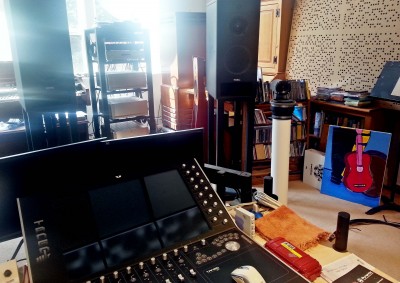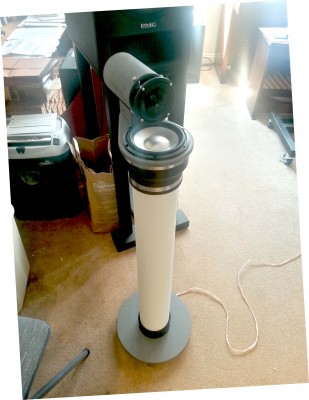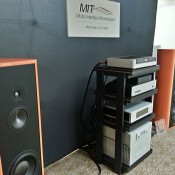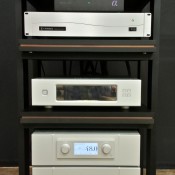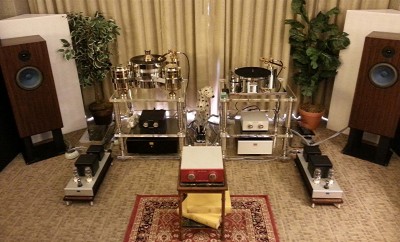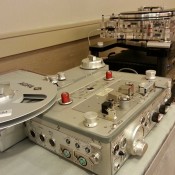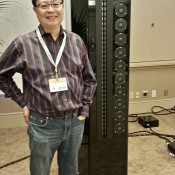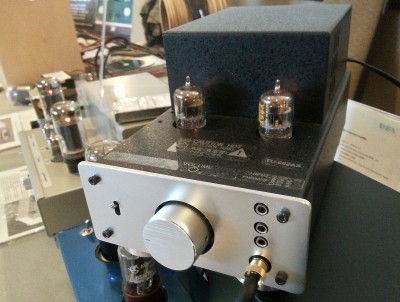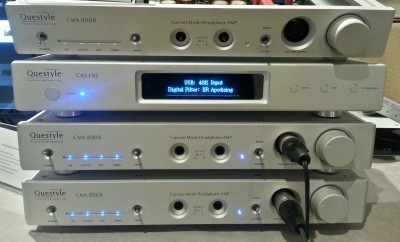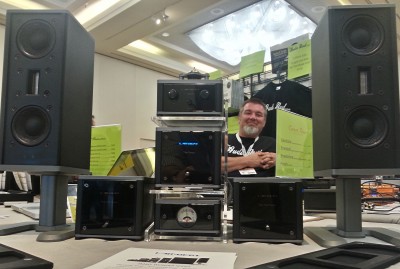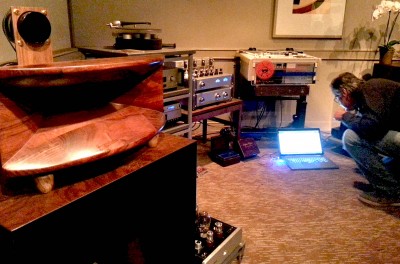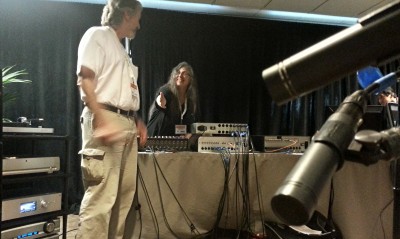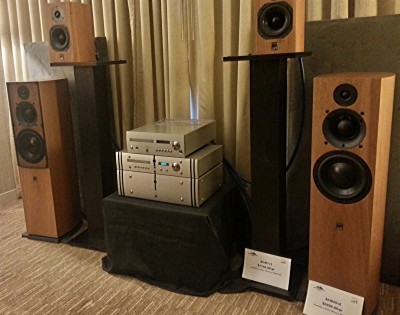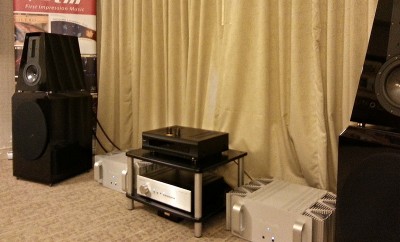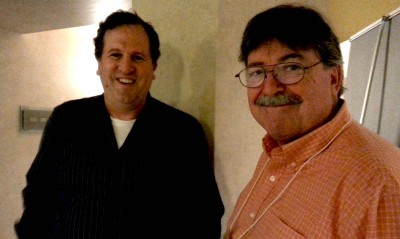California Audio Show 2014
In 2011, I was living in the Presidio of San Francisco and regularly attending Bay Area Audio Society (BAAS) meetings. Since then, the BAAS has morphed into something new, the San Francisco Audiophile Society, and I’ve moved to Minneapolis, the hi–fi nexus of the Midwest. Last winter, along with my colleague and geek buddy Chuck, we held a computer audio scrum for the ASM, my local audiophile society. Chuck and I attempted to answer any and all questions about topics thrown at us from our colorful crowd of geeks and audiophile phreques. The group enjoyed it so much I later thought, “Why not replicate this at an audio show?” As I needed an excuse to hang with my buds in the Bay Area, I contacted Constantine Soo of Dagogo fame, and asked if he’d like a new seminar added to his roster. He dug the idea, and so I was off to San Francisco International, to shoot my mouth off at the 2014 edition of the California Audio Show…
The first item of interest I found was not at the confab, but at my bud Jack Vad’s home studio. Being the San Francisco Symphony’s chief engineer, Jack does a good bit of post production on Symphony titles at home, where he can work undisturbed with natural light in the background. While in town, he and his lovely wife were kind enough to put me up so, mais bien sûr, we spent some time geeking out in his studio…His room has a very clean, 5.1 PMC installation, with the IB2S model for the five main channels and an SB100 sub, plus two Digidesign–branded RM1s and two TB2As for additional surround channels. For electronics, his Merging Technologies Pyramix DAW feeds Forssell D/A converters into Parasound A21 amplifiers.
Just around the mountain from Jack is Siegfried Linkwitz’s house, and Siegfried has parked a pair of his LXminis at Jack’s house. I was familiar with the older Pluto design, but had not heard the LXmini…
As with many Linkwitz designs, the LXmini can be realized as an intermediate–level DIY project. Total cost starts at about $1400 per pair, but the final cost depends on many factors, not the least of which is the quality of amplification and DSP employed. The realization I heard exhibited very good coverage across a broad swath of listening positions, and a pleasant overall timbre. Though not the last word in any particular metric, the LXmini is a major improvement over the Pluto and should be a welcome addition for open baffle aficionados on a budget. With a miniscule footprint, high SAF (spousal approval factor) and reasonable cost, it also offers tinkerers something fun to build on dark winter nights.
O.K., here goes with what isn’t so much a show report as a survey of what I considered worthy of further investigation…Let’s start with the Soundscape Audio & Video room, a Santa Rosa reseller of Martin Logan, McIntosh and Pacific Creek. Though I’m not a fan of M.L.’s panel models, I love their conventional cone critters, the Motion series. Soundscape was showing the Motion 35XT speakers, which start at $1,200 per pair depending on finish. Voiced to match the entire Motion Series, they enable geeks like us “…to build a two-channel or home theater system piece-by-piece.” Paired with Mac’s MDC500 disc player as source ($7k), and a 10W per channel SE300i hollow state integrated ($2800) from Pacific Creek and wiring from Nordost, the 35XTs produced great sound for the price.
Speaking of price, let’s move to the unobtainium end of the scale with Magico, Constellation Audio, Aurender, B.A.D. and MIT. The signal started with a W20 ($16,800), Aurender’s music server into a Berkeley Audio Design’s Alpha DAC Reference with the Alpha USB option ($18,900). Those digital bits fed Constellation’s new Inspiration PreAmp 1.0 ($9k) in turn feeding an Inspiration Stereo 1.0 amp. The stereo amp is also a new piece, and lists for $10k. MIT supplied about $20,500 worth of cabling, which made its way into a pair of Magico S5 speaks, which list for $32,500. The system produced a very clean and well-balanced sound though, as is typical of Magico, it was polite and slightly clinical.
Turning our backs on the modern world, I took some vinyl inspiration from a pricey but pleasantly detailed and open sounding rig consisting of a TriangleART Osiris 12″ tonearm ($5800) mated to one of their Signature turntables, listing at $16,000. A TriangleART Zeus MC cartridge with Music First Audio’s V2 ($4500) transformer fed an Audio Note M6 phono pre ($19.2k), completing the source assemblage. The source fed a Music First Audio Baby Reference ($8600 with remote) into diminutive, dual mono 8 W Audio Note Empresses ($8800 per pair). Final output was from a pair of Audio Note AN-E Lexus HE speakers ($8800 per pair), with some moderately spendy TriangleART Isis cabling to bring it all together. The result: slightly chesty but a fine system overall.
Not so fine was the overall impression I got from Seattle’s Genesis Advanced Technologies. The loudspeaker of choice was a pair of Genesis 2.2jr, their “junior” line source. At north of $80k a pair I expected perfection but found them, at least as configured in the big Aspen Room with what should have been impeccable analog sources, to be a bit tizzy and overly aggressive in the mid–highs. That said, the low end was befittingly quite nice.
For a fraction of a kilodollar, the folks at VK Music had a pile of low-cost gear at their table. They import the Elekit line from Japan, including the $380 TU-882R headphone amp kit. Though the pre–built version on demo exhibited quite a bit of self noise, this hollow state starter system may be just the ticket for your tweaky teen.
Another product for headphone enthusiasts, this time from China, was the CAS192D DAC and CMA800R amp from Questyle Audio Technology. The beefy, “current mode,” fully balanced, ultra–wideband amplifier also has unbalanced outs. The DAC, based on the Wolfson WM8741, supports LPCM and native 1x DSD. It includes five selectable anti–imaging filter topologies, WIMA caps in the signal path, and dual PSUs for analog and digital circuitry.
For those about to rock…on their desktop anyway, I give you Audionerd.com and the familiar face of Steve Holt. Amid piles of fun, low-cost gear, I was impressed by a diminutive system from the Kiwis at The Lambert Company. With a small form factor The Cleaner power conditioner ($TBD), Control pre with Bluetooth ($600), matching The Full Force ICEpower–based monoblock amps ($650), a sub and tiny, stand–mounted 2–way MTM towers with ribbon tweets ($3K for the 2.1 system + $350 for stands), this little rig behaved exceptionally well. Plus, it really did rock.
Another very wifestyle–friendly widget was the new B1 wireless Bluetooth receiver ($190) from Audioengine. For a Bluetooth link, it sounded great, and when mated to their A5+ two way ($400), made for an awesome second system for office, kitchen or boudoir…now you see where I was going with that wifestyle thang…
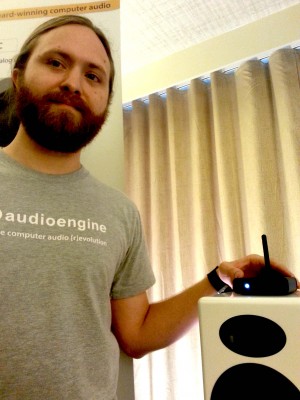
The decidedly hirsuit Daniel Polinski and the groovy little combo of Audioengine A5+ with B1 Bluetooth receiver
For horn–loaded speaker lovers, I found a new fellow to like. His name is Gordon Burwell, and he’s an affable gent who likes to mess around with wood…and audio gear. I don’t have any information on his rig at CAS, but I did note that it looked burly and produced a “…very pleasant sound.”
A staple of all important audio shows, Blue Coast Records is the hardest working label in the biz. It was good, as always, to chat with Cookie Marenco and her staff as she did an “Is it live, or is it DSD?” demo.
A rare occurrence at CAS was the attendance of the new Lone Mountain division of the Transaudio Group. Zach Winterfeld was holding court, bow tie and all, presiding over a selection of reference quality ATC pro monitors.
Next up; the Eficion/Plinius/Exemplar room… Exemplar Audio supplied a modified Oppo ($4500), which fed one of their eXception SE Line Stage preamps ($4250), which was amplified by dual Plinius SA103s in mono mode ($10,150 each). The electronics drove a pair of 3 way, Eficion F300s ($16,900) with AMF tweets, producing a dark presence with very good soundstaging.
While I was running back and forth like a headless chicken, I chanced upon an old friend, Paul Stubblebine. Paul is one of the evil geniuses behind The Tape Project and a formidable mastering engineer. He was hanging with Luke Manley of VTL fame and, after intros, I continued my headlong rush to visit Clayton Shaw…
I first encountered Clayton well over a decade ago at T.H.E Show, when he was half of Evett and Shaw. Most folks know him from his Emerald Physics products but, at the Cal Audio Show, he was playing the Hologram M1 Turbo ($4k) open baffle design from his latest endeavor, Spatial Audio. I didn’t get any time with the speakers but had a most enjoyable conversation with Clayton. I’ll be sure to listen at the upcoming RMAF, stay tuned for that next quarter.
Everyone is familiar with Wilson Audio and often in the background is Peter McGrath, Wilson’s National Sales Manager. Jack and I stopped in to one of Music Lovers rooms, and Peter played us a Tosca recording of his, captured using the Grado HSS system microphones into Forssell Technologies converters. He played the recording back for us directly from SADiE into Audio Research electronics, SP20 ($9000) and Reference 75 ($9000), which fed a pair of Sasha II loudspeakers ($27,500) via Transparent Audio cabling (Music Link Ultra $1500). The result was captivating…lovely and delicate.
By the way, if you’re wondering what audio journalists do on their night’s off, I can report that this one had some, O.K., waaay too much, extra añejo Tequila with friends at Tommy’s Mexican out on Geary. I’m talking, dear audio geeks, tequilas like no other. These spirits had fab flavors and outrageous perfume, at a level new to one who cannot afford such stuff. To provide some scope for our drinking binge, here’s Tequila ambassador Julio Bermejo with what may be the largest capacity bottle of extra in the entire U.S of A.
That’s all for this installment. By the time you read this, I’ll be ensconced in Denver’s Tech Center for the Rocky Mountain Audio Fest, where I’ll be searching for obscure objects of desire…’Till then, thanks for listening!
Music in heavy rotation during my trip
- Carolina Chocolate Drops — Leaving Eden (2012 Nonesuch; Compact Disc) That engaging CCD sound from a century ago has evolved and been refined
- Chicago Symphony Orchestra/Reiner — Mussorgsky: Pictures At An Exhibition (2004 Sony Music; 176.4 ALAC) Solid performing from the Symphony of a fun, bombastic program…tastefully remastered by John Newton
- The Doors — LA Woman (2000 Elektra; DVD-A) The classic, engineered in HRA by Botnick & Grundman, still sounds fresh today
- Luscious Jackson — Fever In Fever Out (1996 Capitol; Compact Disc) A record this raw and excellent pro’ly would not be made today
- Ezra Weiss Sextet — Before You Know It [Live in Portland] (2014 Roark Records; Compact Disc). Stylish, lyrical modern instrumental jazz
- San Francisco Symphony — West Side Story (2014 SFSMedia; Hybrid SACD) The surround mix beautifully transports you to the land of Bernstein & Sondheim…in a whole new way
